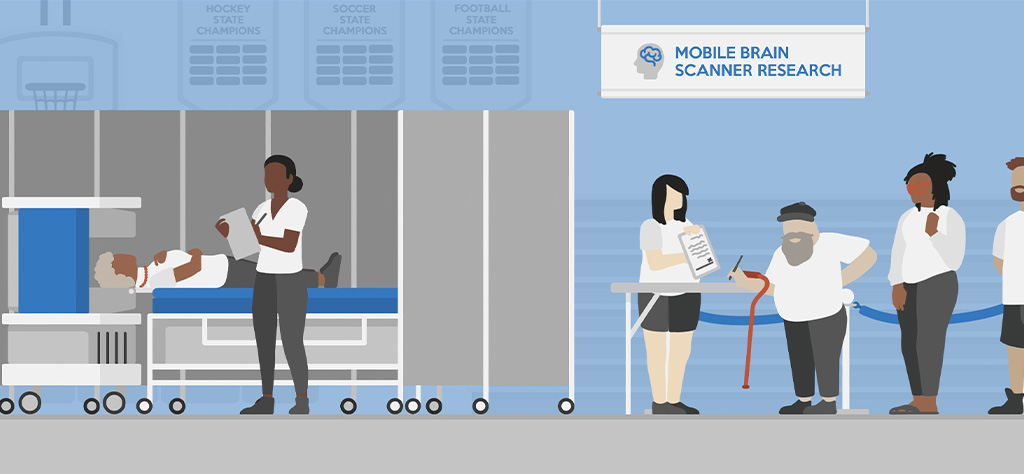News & Insights
INS Keynote Address: Martha Farah on the Impact of SES


 Martha J. Farah
Martha J. Farah
Martha J. Farah delivered a spirited defense of the fledgling field of neuroethics to a supportive audience on Friday, the final day of the 2019 annual meeting of the International Neuroethics Society (INS) in Chicago. She had just been presented with the Steven E. Hyman Award for her contributions to the society and to the whole field of neuroethics. And now she was delivering the Fred Kavli Distinguished Neuroethics Lecture, which is itself a high honor.
Her subject was the impact of socioeconomic status (SES) on the mental health and cognitive abilities of people at different income levels, or more narrowly how poverty affects the cognitive capacities of the poor. It is a burgeoning field whose publications have grown exponentially over the past 12 or so years. But it has taken more than its share of arrows from those who deride the notion that relieving poverty will do much to improve the mental abilities of the poor.
Farah, who is a professor and director of the Center for Neuroscience & Society at the University of Pennsylvania, described three categories of people looking at whether neuroscience might help to devise policy, namely neuroenthusiasts, neuroskeptics, and a middle ground engaged in neuronuance, a category to which many in the room seemed to think they belonged.
She started by pointing to a few examples of the small but meaningful accomplishments in the field so far. She cited a study which showed that low-income families had smaller cortical surfaces than higher income families, another study showing that socioeconomic disadvantage lessened the emotional availability of first-time mothers to their infants, and a third study showing that the brain areas engaged in successful solving of arithmetic problems differed depending on the parent’s socioeconomic status, suggesting that different strategies might be employed to teach different students.
Much of her talk was devoted to rebutting the numerous critics who have emerged over the decades. One stark example was a book entitled Brainwashed, The Seductive Appeal of Mindless Neuroscience, published in 2013, which gathered some favorable notices at the time. She also cited a “bombshell” article by Arthur Jensen in the Harvard Education Review in 1969 which stated that “compensatory education has been tried and it apparently has failed” and “social class variations in intelligence cannot be accounted for by differences in environment.”
But she devoted most of her attention to a colleague at the University of Pennsylvania, Amy Wax, who is a professor of law and also a neurologist. Wax has written a lengthy journal article with the provocative title “The Poverty of the Neuroscience of Poverty,” in which she dismissed brain science, albeit intrinsically interesting, as “inessential clutter.”
Unfortunately, Wax was not at the conference to speak for herself, but Farah went through some of the major points described in her abstract and rebutted them one by one. Wax had said that because brain science generally cannot distinguish between innate versus environmental causes of brain characteristics, it cannot address whether neurological and behavioral deficits can be addressed by reducing social deprivation. Farah countered that even if brain differences are in part genetic, they are not necessarily immutable, and audience commentators suggested that genes might account for only 20 percent on one’s development, leaving plenty of room to change outcomes by altering the environment.
Wax’s main criticism was that knowledge of brain mechanisms yields no special insights over and above what we already know from behavioral science and social observation about how to alleviate harms attributed to deprivation. Farah’s response was that “over and above” is the wrong criterion. Neuroscience can and has confirmed evidence from other fields, strengthening the basis for taking action. Policy she says is typically based on the weight of evidence not a new and surprising finding.
The neuroscience of SES is a young science, Farah said. This will be a long game, so proceed with patience. She acknowledged that there had been some well-meaning overreach by those succumbing to “neuro-enthusiasm” and some backlash against that. But she said the field has already made modest contributions and there is lots of future potential.
Meanwhile, the general notion of conducting small scale trials in the real world to determine what works to relieve poverty was given a boost by the award of the Nobel Prize in economics this month to three American economists at the Massachusetts Institute of Technology and Harvard University who showed among other things how best to tutor remedial students in India and the value of preventive health care.
The Royal Swedish Academy of Sciences, which awards the prize, stated that the trio “has considerably improved our ability to fight global poverty. In just two decades, their new experiment-based approach has transformed development economics, which is now a flourishing field of research.” The academy said their approach involved dividing issues into smaller, more manageable, more precise questions—such as the most effective interventions for improving educational outcomes or child health—that are often best answered via carefully designed experiments among the people who are most affected, mostly in the developing world.
This is an economics approach to alleviating poverty, of course, and Farah demurred at my suggestion in a conversation before she spoke that the work of neuroscientists was in any way comparable. Yet those engaged in the long-term effort to bring the insights of neuroscience to bear on eradicating poverty may take heart in recognizing that it can take decades to achieve success. As Farah said in her lecture, there are many potential future ways for neuroscience to deliver information to guide action, such as developing biomarkers to shape research and for screening and predictions, especially early in life when the behavioral science repertoire is limited. There are also windows of opportunity to protect brain development prenatally. And further out, possible manipulation of the expression of genes or of the microbiome. As she said, it will definitely be a long game, requiring patience.


